Metro designs of the Russian Empire in the XIX-XX centuries
In 2015, the metro system of St Petersburg celebrated its 60th anniversary. The first ideas about metro construction appeared here when it had been the capital of the Russian Empire, in the XIX century. But the first line started operating in 1955, in the USSR.
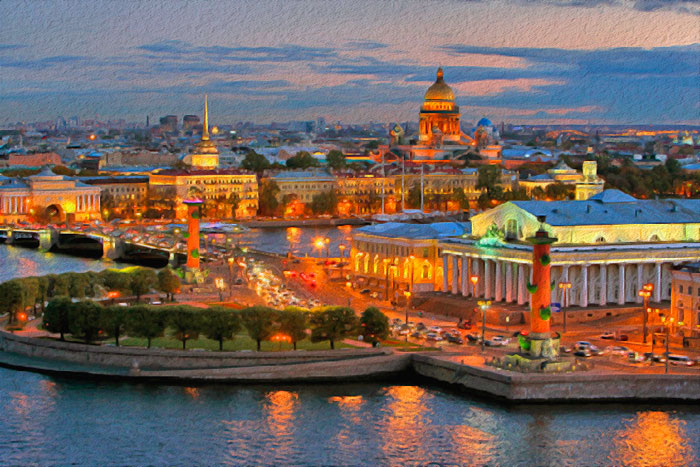
St Petersburg, a Spit of Basil Island
By the 30s of the XIX century, there were about 300 plants and enterprises in St Petersburg. The territory of the city was growing rapidly, the new buildings were being constructed all the time and the public transport was developing in accordance. The first railroad in Russia was constructed between St Petersburg and Tzarskoe Selo. In 1820, the first projects of the transportation tunnels appeared, the commoner Torgovanov presented the design of the underwater tunnel between Basil island and Admiralty island to the Emperor Alexander I. A bit later, engineer P.P. Bazen designed the underground road under the Neva River.
The transportation engineer Y.K. Ganeman developed a design of the tunnel under the Neva, which would connect the Mars Field and the Petrogradkaya side. The special feature of the design was the possible method of construction – with a special mechanic shield, a TBM of that time. I might have been cheaper than the construction of the Trinity Bridge, which we admire now there. The tunnel had several levels for vehicles and pedestrians. For pedestrians Ganeman suggested the construction of the moving pavements, the predecessors of the modern travellators. The travellators under the Neva River appeared in XXI century at the second exit of the station Sportivnaya.
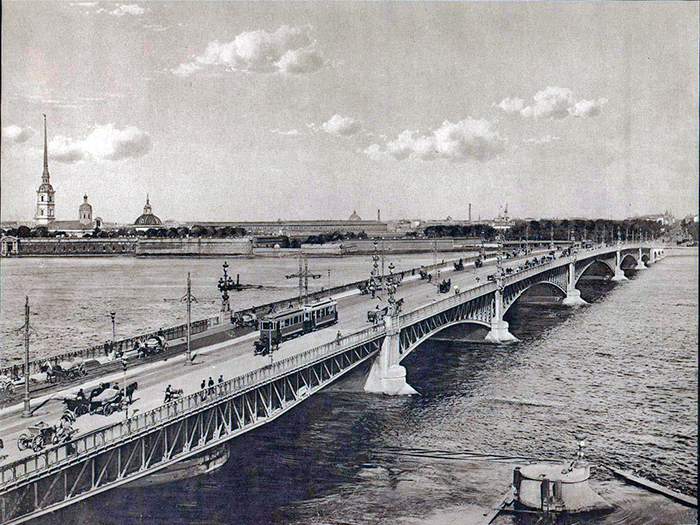
St Petersbrug, in the beginning of the XX century. The Trinity Bridge Source: photo-find.ru
In 1889, it became relevant to connect all five railway stations of the capital of the Empire – Varshavsky, Baltiysky, Tzarskoselskiy (at present, Vitebsky), Moscovsky and Finlandsky with the separate rail lane. It was meant to run around the city through the overpasses along the Ligovsky and Obvodny canals and then cross the Neva.
The idea was promoted by the Baltic Rail Road, the railroad connected Revel (at present Tallinn)’s port and Baltic port with the city. Also, the idea was promoted by the next generations of engineers.
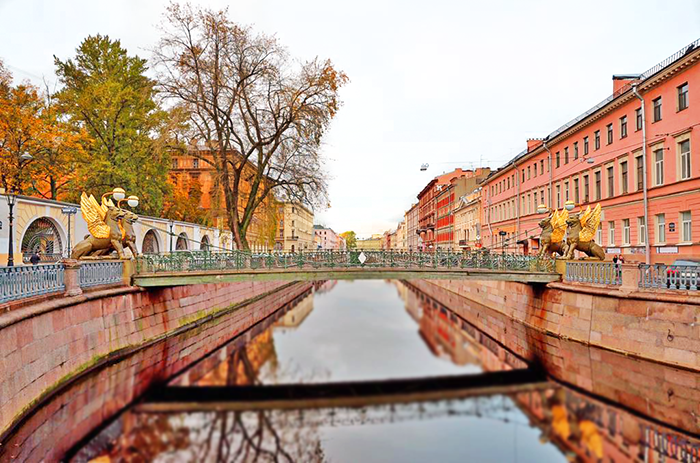
St Petersburg, XXI. The Bank Bridge. Source: photo-find.ru
For example, in 1893, R.K. von Gartman suggest to fill in the Ekaterinisky canal (at presenthe Griboedov canal) and to place the rail line there as one of the possible routes to connect all the five railway stations. But the city administration at that moment committed their financial resource to the tram line to get electrification. In Budapest, in 1902, the first electric metro line started operating. St Petersburg engineers started to apply with the electric metro projects as well.
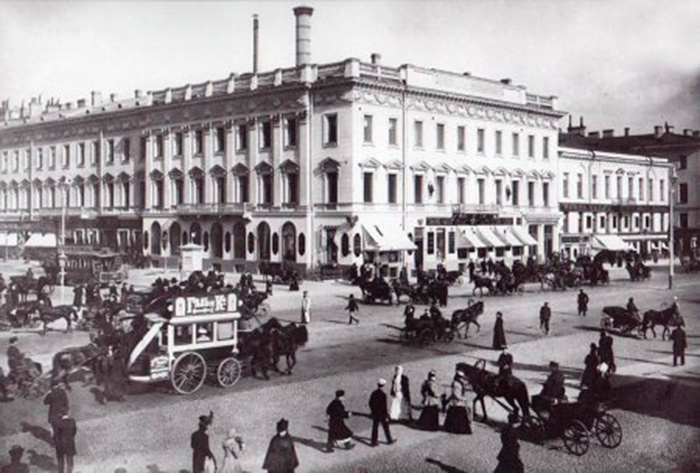
Nevsky prospect, 1900. Source: allvintage.ru
Metro lines projects of Girshson
Engineer Girshson contemplated two options:
- A first option – the construction of the underground tram line to help with the traffic at the Nevsky prospect, the main street of the city. It could go under the pavement of the prospect and at the crossing of the rivers Moika, Fontanka, and the Ekaterininsky canal it could be divided into two separate one-track tunnels. The state-of-art construction techniques were required to construct the underground tunnels and Girshson suggested using Brunel’s invention – the first TBM used for the construction of the tunnel under the river Thames. He planned to construct pits for mantling the shields. Girshon thought about 9 stations decorated with white encaustic tiles. He designed staff rooms for all the stations and even the benches for waiting.
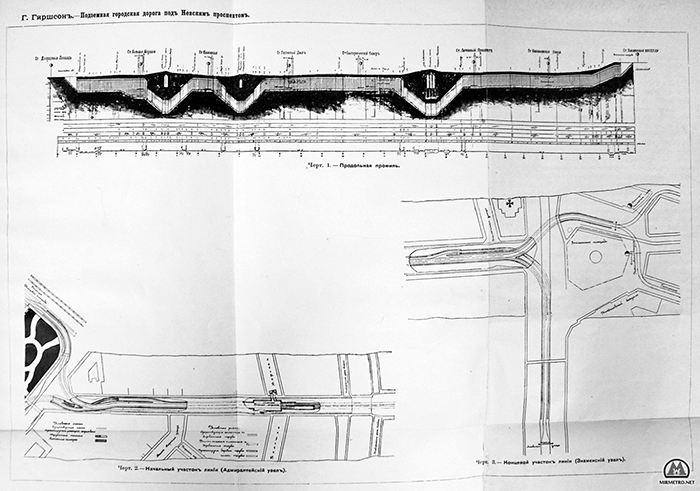
Girshson G A – Design of the Underground railroad under the Nevsky prospect. Source: mirmetro.net
- A second option – the line on the surface could run from the Baltiysky and the Varshavsky railway stations along the Izmailovsky Prospect until the Yusupov’s garden, where it could go underground and then resurface near Lebyazhiy canal and crossing the Neva along the bridge. Then the trains could continue its way to Finlandsky railway station by overpasses.
The Russian branch of Siemens und Hulske, with the Siemens performing the first electric metro line in Budapest, also announced their readiness to participate in the project based on the Girshon’s designs. But as the tram line had been already opened along the Nevsky prospect, the authorities decided against it.
Balinsky’s metro peroject
The most famous project of that period was the underground metro project created by P.I. Balinsky. It was also declined. In 1901, he attempted to implement it nevertheless. Together with American engineer M.A. Werner he developed the second design of the metro line, partly located on the overpasses. The project could connect the center of the city with Basil Island, the Okhta Side and Vyborgskaya Side.
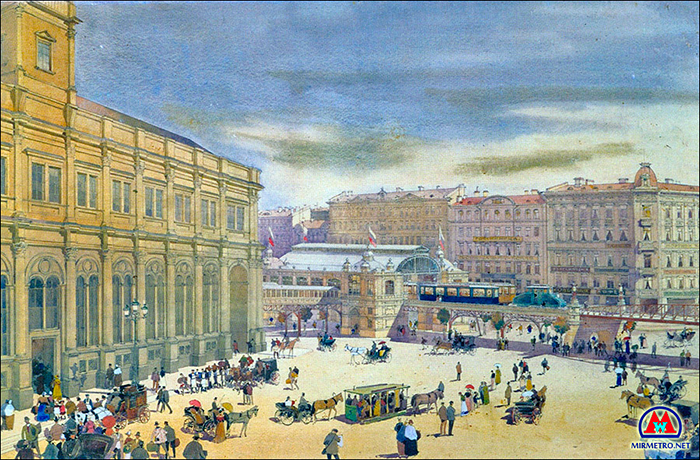
Balinsky’s project of the overpass station Nikolayevsky Vokzal, artist: N N Karazin (at present there is the Moskovsky Railway Station) Source: mirmetro.net
The total designed length of the system was 102 km, the designed average speed was 74.9 km per hour. Under the overpasses, the engineers planned to accommodate shops. But the total cost was estimated at 190 million rubles. With the rate of that time, it was the tremendous amount. So the City administration declined the project. Balinsky was convinced that St Petersburg needed the similar to metro public transport:
Balisnky wrote: In this day of hardship, it is not easy to make poor people waste so much time for traveling per day.
There is no doubt, the cities with the population over million are to construct relevant transportation links of the necessity. The links that would not depend on road traffic, increasing all the time. We need to start constructing a metro.
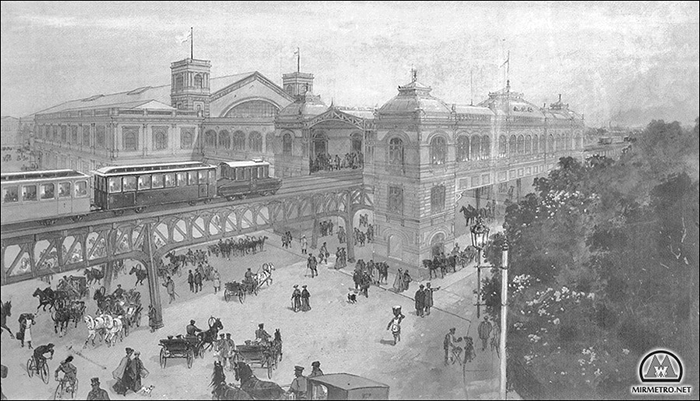
The design of the overpass station Baltiysky Vokzal. Source: mirmetro.net
Metro is a sign of the city’s recognition as a global city
In 1912, engineer F. E. Enakeev developed a work Goals and object of St Petersburg’s development, emphasizing metro and other means of public transportation as a priority. He called the metro system the marker of the recognition of the city as a global modern city. He also designed a plan of the city’s renovation in collaboration with L.N. Benua and M. M. Peretyatkovich. They wanted to replace the Krykov canal with the prospect, in particular.
The area of Troyitse-Izmaylovsky Cathedral was planned to be replaced with the new railway station and the new railroad would go from it to connect it with the Sestroretsk railroad. Enakiev did not plan to use underground construction due to the difficult geological conditions. But later he reconsidered, as the overpasses would change the architectural view of the city, and suggested the construction of the tunnel under the Fontanka River, the Griboedov Canal, along Sadovaya street towards the new railway station connecting the railroads from Baltiysky to Varshavsky railway stations.
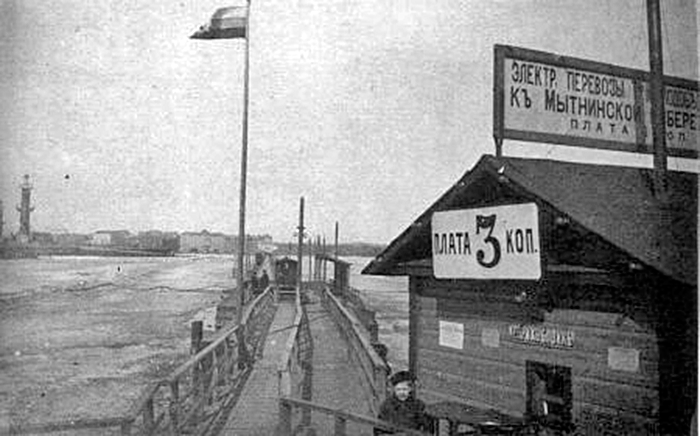
Tram crossing, the Neva river. 1906. Source: allvintage.ru
In 1914, the Frist World War started and it stopped the construction development in the Russian Empire. Although between 1914 and 1917, the population of the city grew, 297,200 people came to live there. The tram system developed and still remained overcrowded. And the Head of the city Earl I.I. Tolstoy commenced the metro project development.
The advanced payment was made, 25,000 rubles, a large amount for that time. The State Rail Road Agency was in charge. By 1917, there were several designs submitted, including light rail. But the cost of the projects and the starting Civil War brought the implementation to stop.
Additional articles
Select an article of interest:
Mongolia designs new railway “Bohdan”
March 1, 2022
The construction of largest hydraulic tunnel has begun in Qatar
February 28, 2022
JSC "VO "Mashinoimport" supplied escalators for the Novosibirsk metro
December 22, 2021
Russian city Samara plans to build a metro
December 17, 2021
Tell us about our article to your friends,
sharing a link in a social network















Comments (0)
I hereby confirm that I am familiar with the privacy policy of
and agree to the processing of personal data. Read more